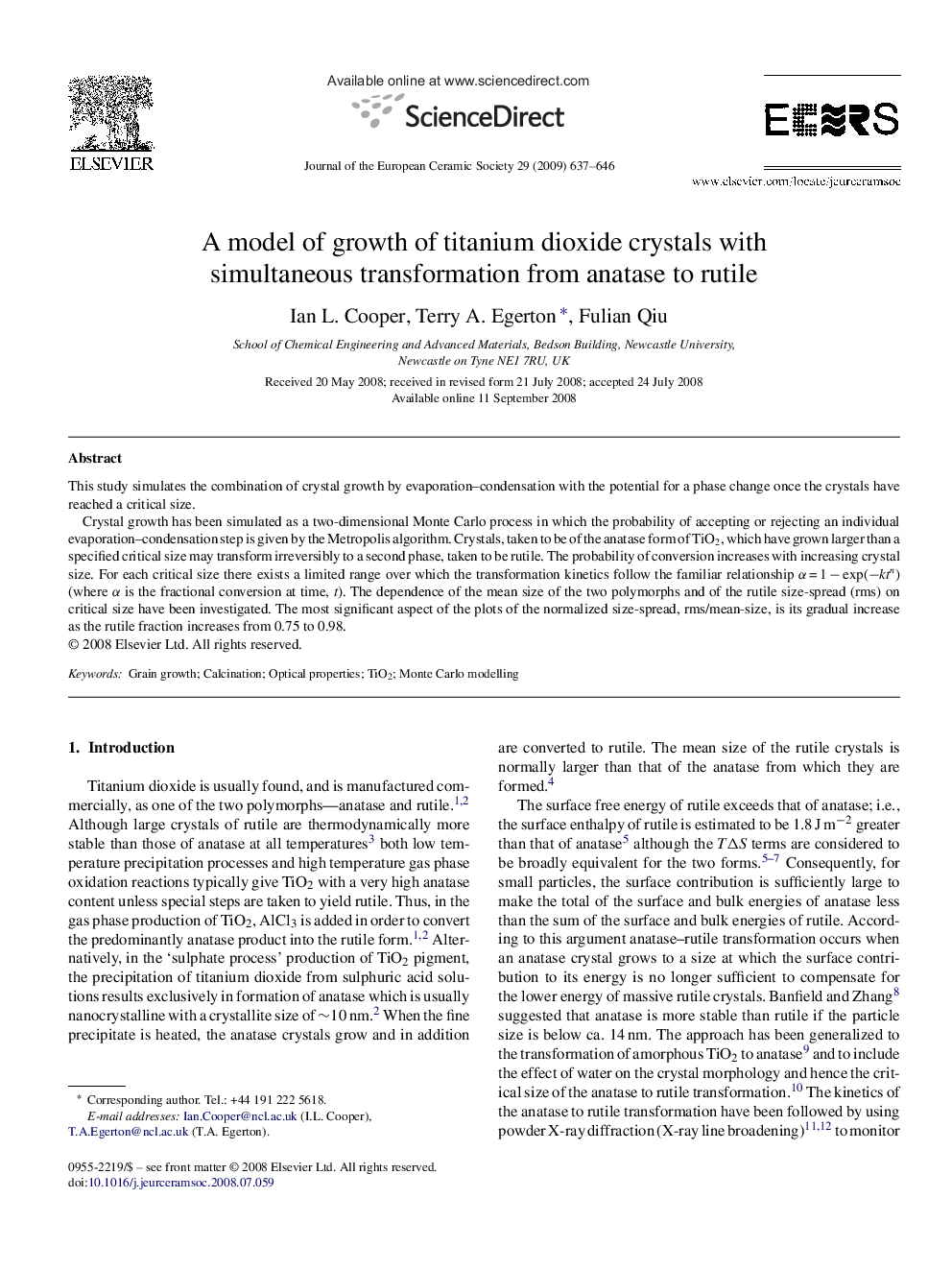| Article ID | Journal | Published Year | Pages | File Type |
|---|---|---|---|---|
| 1476914 | Journal of the European Ceramic Society | 2009 | 10 Pages |
Abstract
Crystal growth has been simulated as a two-dimensional Monte Carlo process in which the probability of accepting or rejecting an individual evaporation-condensation step is given by the Metropolis algorithm. Crystals, taken to be of the anatase form of TiO2, which have grown larger than a specified critical size may transform irreversibly to a second phase, taken to be rutile. The probability of conversion increases with increasing crystal size. For each critical size there exists a limited range over which the transformation kinetics follow the familiar relationship α = 1 â exp(âktn) (where α is the fractional conversion at time, t). The dependence of the mean size of the two polymorphs and of the rutile size-spread (rms) on critical size have been investigated. The most significant aspect of the plots of the normalized size-spread, rms/mean-size, is its gradual increase as the rutile fraction increases from 0.75 to 0.98.
Related Topics
Physical Sciences and Engineering
Materials Science
Ceramics and Composites
Authors
Ian L. Cooper, Terry A. Egerton, Fulian Qiu,
